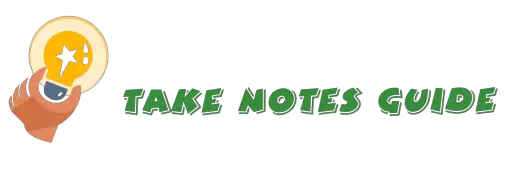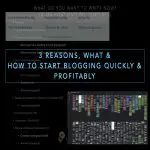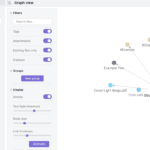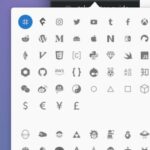This post can also be titled how to improve your understanding. Based on logic and research, how effective you take a note depends on how actively engaged you are when you take that note. How did you write that note? For example, with red, teary eyes for the pitiful protagonist or just mindless scribbling away copying down what the speaker was saying. Is it with intense concentration or just with your mind wandering somewhere else. Is it with a relaxed, clear and focused mind or sleepy, uninterested mood? Is it with a imaginative and associative way of taking your note? Even simply summarising a paragraph and writing in your own words down in a note is some form of active engagement. You would be more likely to take and remember a good note if you have to tweet it on twitter, right? There are many ways to engage with notes. Do it naturally in your own ways. Some methods are better suited to you than not. Let’s see one way to do it below, and it may well be the best method I know!
So what is the one sensible way to take effective notes?
- Factors And What Next Of An Outcome: How To Accomplish The Outcome And What Use Of The Outcome
Why Factors and What Next?
The advantage of this method is it can be commonly applied to subjects and matters, not just before-and-after photos comparisons. One may figure the process of how to get from a mound of clay to a beautiful statue. Some processes are more complex and longer than others, but we practice logical thinking to analyze all the same. Even for a painter, he may need to understand, practice, realize, test and refine the different concepts to know what and how it works for him before finally arriving at the final art piece. Another example is speech. We learn to pronounce one word at a time in the beginning repeatedly associating what the word means or refer to while we are still toddlers. And then with the mastery of the basics as a factor, we move on to the next and so on before more intermediate and advanced. Another benefit of this approach is that we train ourselves to proactively consider future possibilities and be smarter making better life choices with lesser probability of having to be prompted and hinted by someone every time. Be an active learner, not passive. We simply walk up the stationary escalator or side stairs instead of standing there waiting indefinitely for the repairman.
The Factors And What Next Method
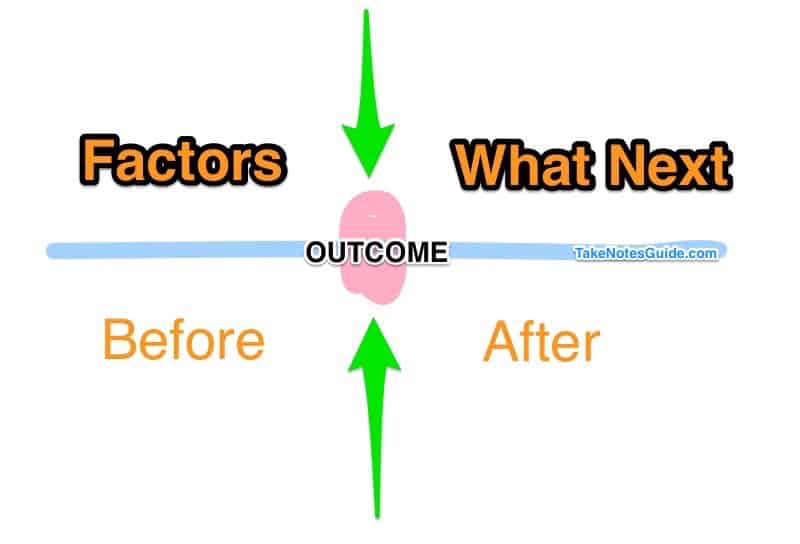
Change your perception of how you see things and then take notes. Doing the same thing over again just produce the same outcome. Make meaningful associations. A direct way is to ask yourself why is this and where is this going next. The more detailed the better. A person with a better understanding of the matter is better equipped to deal with the different variations. Write or type it down, even if it is a question to indicate that you do not understand this (so you can go figure it out later). This is building our logical way of thinking. Do not just accept what was told or taught without understanding the story or factors behind it. If you have more questions than answers, accept that you may need to keep working harder and not give up yet. With this process, you can also tell more easily falsehood from the truth because objective evidence backs up the truth.
Just focus on Factors And What Next method for one scenario as an outcome to avoid confusion first. You may pick a particular point in time / photo / milestone / end-result / state as a scenario for outcome. There may be one or more ready scenarios as factors (optional). This outcome can be future factors.
Example One: Before-and-After Photos
One outcome for the After photo is chosen as what next and another scenario Before photo as an additional (optional) factor support.
You probably have seen Before-and-After big-to-fit transformative photos. Photos are more engaging, but we apply the same process to effectively take notes.
Ask detailed questions with what are the factors and related questions?
- What did he do?
- Why did he become large in the first place?
- Which body part was bigger then?
- How long ago was the before photo for the transformation?
- What did he eat then and how?
- What exercises?
- Why does he have such motivation?
- Did he transform without changing his bad habits?
- What support did you have?
- Are the methods natural?
- When did he start and how long between?
- Is there anything else he did not reveal?
- Was it photoshopped? Is it possible the pictures are swapped to fool others?
- Can you figure out the steps to get from before to after? List down your own ideas as well.
What next?
- What are the long-term benefits?
- How long since his After photo?
- What is his status now?
- Did he get large again or stay slim?
- Any side effects?
- Is it really better?
- Was the result unsustainable and why if so?
- What valid comments people made?
- What can he do next with his current physique?
- Can you improvise and offer better solutions?
You soon realised you may only have very limited answers to above questions. That is fine working with what you can find out, but you know now there are many unanswered questions so you will not so readily jump to conclusions like before. You will probably research more as to what you learned of the solution to ascertain the percentage statistics of success or failure. This is also holding yourself accountable for your own decisions and actions. Important decisions can mean you noted a list of pros and cons weighed for effectively calculating a probable outcome.
Exercise:
- For a chosen subject matter: it can be a topic, start asking the different sensible questions from different angles or perspectives relating to the factors that contribute to the selected current situation or state. Answer or research those questions. Take notes of important points if you need.
- Ask what next for the same selected situation or state. What are the possibilities? Consider as many as you can. Answer and research again. Can you do it differently or improve it? – This is important because our goal is advancement with logics. We can create wealth of knowledge and solutions with creativity and logic.
Even if you cannot answer all the questions immediately, you may still fare better than not even having considered the possibility. This process may take some effort for the novice, but again should we expect ourselves to excel without being diligent and putting in more hard work than others?
Example Two: Textbook chapter
Select a chapter ending results as the outcome. The previous chapters may be scenarios factors.
If you are studying a textbook with this method, perhaps you can select one chapter and zoom into the last chapter pages, with what of your current relevant built-up knowledge that can contribute towards the solution as Factors, look at the chapter ending and questions to know what is the expected result and how this is useful in future chapters as What Next, reverse engineer as many possible questions that can lead up to the outcome. Then after you study the chapter within, did it address the solution the way you expect it to, or perhaps you think it neglected and could improve in some aspects. You may use the term Before and After as well if you are more comfortable with it. I think this preparatory work can be important before studying (and it should not take too long anyway) the main text because you thought about it first and understand the problems and obstacles to reaching the goal and how are previous chapters useful to this chapter, and when you read the solutions in the chapter you know why to appreciate the knowledge and may feel gratitude for those who created these (correct) teachings. Congrats to those who can figure out the right way to reach solutions and results without even reading the chapter within or in its entirety who may be really smart or geniuses, but nonetheless logical deduction is a skill we can cultivate over time so do not give up.
Alternatively for those who are familiar with the concept of Divide-And-Conquer (Read more in How To Take Notes For Computer Science) way of solving problems may find this method similar. Divide-And-Conquer, as its name suggests, is just a way we approach a project or problem by dividing it up into smaller, manageable tasks or units. And then we solve the tasks one at a time, thus not over-whelming ourselves with a huge obstacle at one go and yet moving towards the goal until project completion. Another perspective would be doing what we can do one at a time given our current situation. Factors can be all these steps for every task and What Next can be the milestones leading up to project completion.
What to do with these valid questions you wrote?
- Old school: Think it over. Review each point carefully. You probably missed some earlier clues or ideas or that was shown before.
- Research. Google your queries. I would think researching is also an important skill by itself that improve with practice.
- Somebody probably had the same doubt and asked too. Read for authentic comments and replies by others e.g. YouTube and Quora.
- You did what you could and still stuck? This is probably the time to ask your teacher or lecturer. But this can be rar thing if you did your homework right.
Notice I mentioned valid, because you can ask a lot of details but more relevant and useful questions matters more. Support the notes with facts, evidences and statistics if applicable.
But I have to take quick notes and no time for detailed questions?
Good question. Just one takeaway question then to ask when you study or take notes:
{Does this makes sense?}
If it does not, underline, circle or put a question mark to it so you can re-visit it later. If you are studying from the desktop and using Evernote, you can click the Evernote icon at the top right and select clip rectangle or window. Quick-cuts can even save you time to go through later even if you do not have the time to contemplate yet.

Alternatively, you can install Evernote Web Clipper from Chrome extension (below) and just click the Evernote icon in Chrome to start clipping away. Notice that you may add tags and remark here also. Tags are convenient to search your notes.
Tip: If you have no time or for any reason you do not organise your notes into stacks and notebooks, you can just put everything into one big subject e.g. All-my-notes, then just search by tags as long as you tagged them properly.

Contradictions
If there is a contradiction in an understanding of a point, is this a misunderstanding on my part or a glaring loophole from my previous learning? Frankly, contradictions and doubts can be a really good learning experience for a breakthrough in understanding. Hard-earned realizations can be much more valuable and memorable than ordinary ideas. Would you remember the everyday walking steps or that critical run you focused with all your might for that ONE far jump over a river? You questioned and work for the answers, shouldn’t you reap the rewards opposed to someone who didn’t? Take notes of these contradictions so you can google or ask someone qualified to explain it.
Testing
Once you have your theory based on the research, supports and logical deductions free of contradictions and inconsistencies, it is time now to put your theory to test with experiments and trials if possible, or at least research in that direction for existing studies, reports or related supportive evidence. When we have an objective evaluation of reasonably valid samples’ size, the results are more credible based on statistical probabilities or experience.
Testing can play a major role in certain studies such as programming. For example, when learning the syntax and concepts of a programming language one may have to type and test them out to see how they work and figure out what may went wrong by considering the different and most probable possibilities first when results are unexpected, make the changes each at a time to test for results again until we get the right one. I personally test out most or every syntax I learned to make sure I got it right and I find that many times when we troubleshoot or debugging what is not working we can learn valuable lessons that may not be taught or mentioned in the original lectures. If I were the one who set the exam questions, I may also test on information that can only be acquired with applied practical effort and coding experience. Give more weight to the notes of the problems you solved, because it may not only matter for your assignments and examinations but future open-source projects, even for creating micro-sites that solve a particular problem for others and yet earn you passive income with ads.

Practice
If your evaluation and notes-taking efforts are for a certain purpose of use, then put it to practice. With enough practice that may take the form of a habit, you may improve with realizations and take pithy notes for key ideas for more enhancement and refinements with further tests and experiments. Eventually, you may get to a point of mastery where you can perform at a higher level quickly.
What about memorization of information?
Honestly, when you understood a material well and already spent some time dwelling on the factors and future possibilities, I would think you had done well to remember the matter for laters because of the pondering and association exercises involved that can be one of the best usual memory technique. However, you can still speed review your analysis process of your notes by reminding yourself to review it again by setting up a reminder 2 weeks to a month later. For example, in Evernote from the note window, click the settings (3 dots) and Add Reminder to set for tomorrow, in a week or a specific date and time.

Please read More Than 10 Ways For Taking Notes To Memory But Never Stop Improving for more ideas.
Why does this method (Factors And What Next Of An Outcome) work?
We are dealing with one particular instance – The outcome, and doing what we can in our ability to understand what is going on in this case, not overloading ourselves with countless instances. If we cannot handle a single case well, what chances do we have of multiple ones?
We know by instinct if we do something, we will get its resultant effect. For example, our hands will be clean if we wash the dirt with water. When we put our clothes out under the sun it will dry. The tea will diffuse with hot water. Rice will be cooked with heat, water and time. Cats are happy when petted, and so on. For abstract and advanced topics we are unfamiliar with, we think of ways to learn and carry out experiments to test our ideas. This may be different from learning with examples where we learn more easily from the knowledge of others by simply doing as told. But what if we train ourselves to be solution creators or problem reverse engineers? Well, it is the hope of the post that the reader can learn to be one.
When should I take notes?
Taking notes at the right time can be an important factor for effectiveness. For example, when we take tea or after showers, we may feel a marked improvement to focus on understanding and take notes. Please read here for ideas: 10 Ideas When To Take Notes.
Why should I take notes?
Please do not forget to make sure to have the right motivation for doing a task or project, or it may not last long enough to see it through. A strong motivator will help push you to finish up what you started. This may sound common sense but you probably heard of the word ‘quitter’, and it can happen more often than we want. It does not matter if one takes mental or paper notes as long as one can correctly and effectively complete a good task.
Before you embark on a new endeavor, remember to evaluate closely with good, clear and valid points why and which are your options and justify what is the best path base on strong reasons. Be clear what is the main goal and which are the sub-goals and mini-goals. You should know why you are taking notes and how this is helping you achieve your goal.
Consider what happens when things do not work out as planned. What are your backup and contingency plans? Is it just wasted time and effort? Be careful not to take too much risk such as spending so much more than you may probably not earn back. Having a good plan can give you peace of mind and not panic when things go wrong. You may wish to note down your goals and backup plans and place it somewhere close to often remind you, such as placing the note under Shortcuts in Evernote’s left pane. Just do not fail to plan.
You may wish to read Is Note-taking Important? 12 Reasons And Benefits Why.
Parting conclusion notes
The next time you take notes, train yourself to ask questions or at least ensure how or why it makes sense for fast notes. This is an information digital age where there is so much to learn it may seem daunting. Times are changing and people are trending towards being skillful with researching for answers than just being good at memorizing what is taught on hand. Being more reactive can be a favorable trait now. Whatever you do, choose good deeds. The more you understand how things work, the more you realize what we do now and here will affect what will happens to us next. Maybe you do not see an immediate huge difference, but there can be subtle changes. You do not have to accept everything people show or tell you at face value because you have a choice to ask and evaluate if that is valid and true before conclusions. And be honest to yourself and others because they will not believe anymore when they see how things do not add up or make sense. Matter of time.
This post can possibly be the most important of all on Takenotesguide, so please take note, remember and apply. Logical understanding is paramount not only to studying and work but also to all aspects of life in my humble opinion. You do not have to give or return any favor at all for learning and use of this method which may just be my way of sharing and applying the universal law of cause and effect.
If you have been with me this far, you should be able to figure out good deeds begets what and what comes before retribution, so best of luck with understanding the ins and outs of your life choices and chosen learning topics.
Related Questions
I do not understand the lectures/meetings/topic and do not know what to ask
Relax, everyone is different. Do not panic. Your ideas and questions can come later. Perseverance can make a difference. Keep at it. Maybe you will realize you are not asking the right questions at the right level. Or that you are not in your creative and focus gear at that time. If you tried and tried, and still couldn’t do well, perhaps your talent and propensity lie elsewhere? Perhaps you are better with learning from a craft master and learn by just doing through apprenticeship following step-by-step instructions without much contemplation first. And keep practicing your craft till you reach a level of proficiency. Then you may decide to take valuable notes of your realizations.
Who may before-and-what-next method be suitable for?
Perhaps anyone: Students, educators, researchers, authors, bloggers, journalists etc, including anyone with a problem to solve or need to be creative with coming up for a new idea, solution, and product. Even for someone who wishes to analyze with clarity any concerns or issues he faced. However, a method can only be as good as its user.
Should I take notes with a pen or a keyboard?
There are advantages to both and perhaps up to one’s preference and purpose. Please read here for more: Is It Better To Write Or Type Notes.
Is there a fun resource to help train logic?
Dr. Eureka Speed Logic Game is a board game (Age 8+) that can be played with others or by yourself with positive reviews that it’s fun. Even adults may benefit.
SG 423 IQ Fit (Age 8+) and IQ Puzzler Pro & IQ Link(Age 6+) by Smart Games are logic physical toy games.
Gravity Maze Marble Run & Rush Hour Traffic Jam Logic Game & Stem Toy (Age 8+) by ThinkFun may promote logic and critical thinking.
These are available on Amazon. While these board games and toys may not have a story element, they can be fun and educational. When we let kids associate logic with fun for a positive childhood experience, we are essentially planting a life-long thinking skill and a constructive attitude to problem solving.
